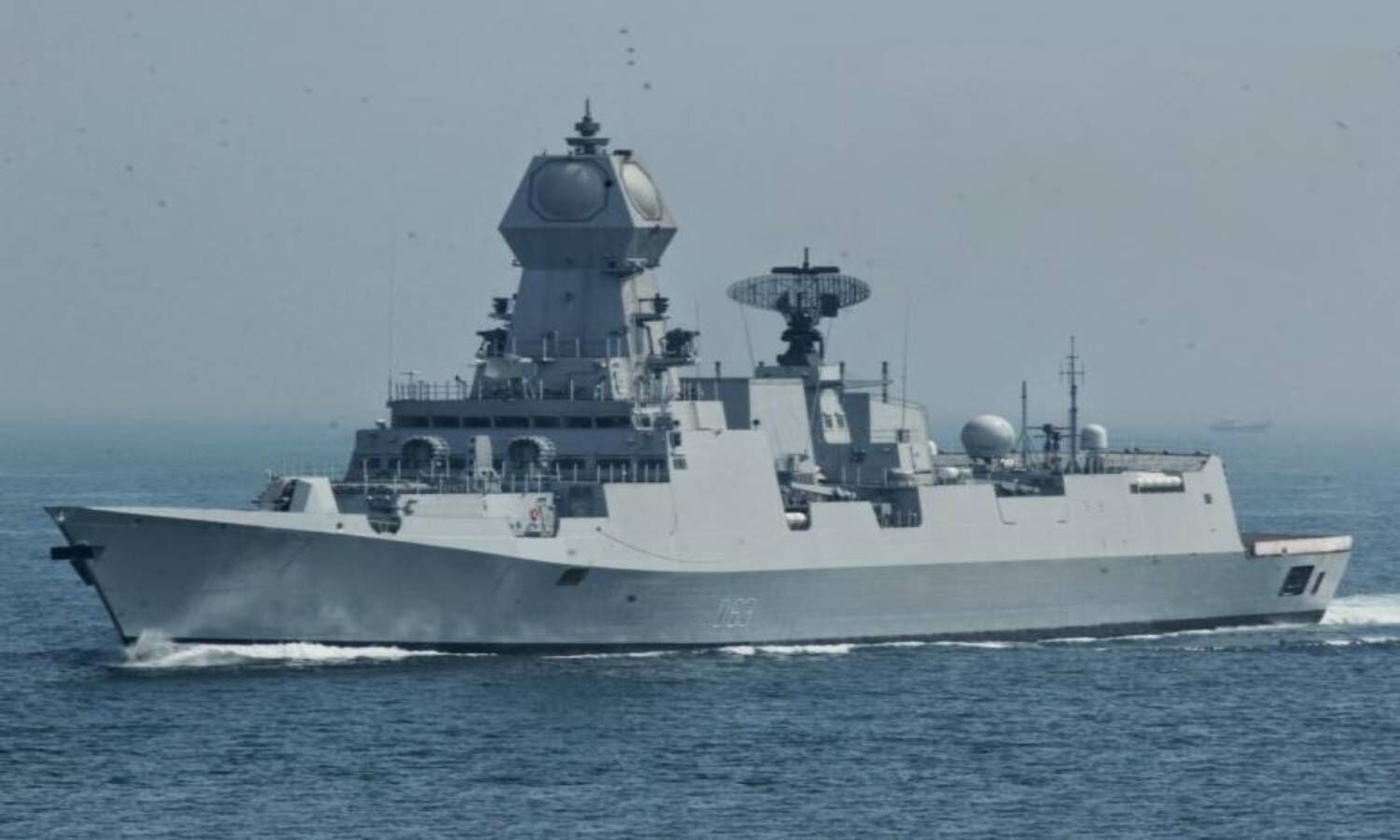Live Classes

The second of the Project 15B stealth-guided missile destroyers built by Mazagon Dock Shipbuilders Limited (MDSL), INS Mormugao (Pennant D67), was commissioned into the Indian Navy on Sunday. The ship, named after a key port in Goa, was commissioned a day before the Goa Liberation Day celebrations.
Project 15B
Over the last decade, the Indian Navy has commissioned three guided missile destroyers of the Kolkata class — INS Kolkata, INS Kochi, and INS Chennai — under the project codenamed 15A. These ships were a step ahead of their precursor Delhi class of ships — INS Delhi, INS Mysore, and INS Mumbai. All these ships were built by MDSL, one of the country’s most important Defence PSUs. A ship ‘class’ describes a group of vessels of similar tonnage, usage, capabilities, and weaponry.
The contract for four guided missile destroyers more advanced than the Kolkata class was signed in January 2011. This was Project 15B, and the lead ship, INS Visakhapatnam (Pennant D66) was commissioned into the Navy in November 2021. Designed by the Warship Design Bureau, Indian Navy’s in-house warship design body, and built by MDSL in Mumbai, the four ships of Project 15B were to be named after four major cities around the country — Visakhapatnam, Mormugao, Imphal, and Surat. A ship class is identified by its lead ship, in this case, INS Visakhapatnam.
The construction of INS Mormugao
The keel of Mormugao (Yard 12705), was laid in June 2015 and the ship was launched in September 2016 by then Defence Minister late Manohar Parrikar. The Visakhapatnam class has largely maintained the hull form, propulsion machinery, many platform equipment, and major weapons and sensors from the Kolkata class to benefit from series production. But it incorporates advanced stealth features and a higher degree of automation. The sleeker hull design and the radar-transparent deck fittings make the vessels difficult to detect.
Y12705 (now INS Mormugao) completed basin trials on December 15, 2021, and undertook her first sea sortie on December 19, 2021, when Goa celebrated 60 years of liberation from Portuguese rule. The ship has around 75 per cent indigenous content.
Specifications and weaponry
INS Mormugao — and the other three ships in the class — are 163 m long and 17.4 m wide, with a displacement of 7,300 tonnes. For comparison, the recently commissioned first indigenous aircraft carrier INS Vikrant is 262 m in length and 62 m in width, and displaces around 43,000 tonnes when fully loaded.
INS Mormugao and other ships of the class are operated by a crew of 350, including 50 officers and 250 sailors. Accommodation and working areas have superior ergonomics and habitability compared with its predecessor classes. The Visakhapatnam class destroyers have multiple fire zones, battle damage control systems, and distributional power systems for improved survivability and reliability in extreme operational and conflict scenarios. They have a total atmospheric control system (TACS) that offers protection to the crew from chemical, biological, and nuclear threats, as well as a state-of-the-art combat management system that can evaluate threats using analytical tools and create a tactical picture that includes available resources on board. The warships have a secure network for data from its sensors and weapons systems.
The ship’s firepower consists of vertically launched Barak-8 surface-to-air missiles and BrahMos surface-to-surface cruise missiles for long-range engagement of shore- and sea-based targets. The forward bow deck has a 127 mm main gun, and four AK-630 30 mm guns for close-point defence capability.
The destroyer will also be armed with indigenously developed 533 mm torpedo launchers and RBU-6000 anti-submarine rocket launchers. It can operate two multi-role helicopters — Sea King or HAL Dhruv. The ship also has rail-less helicopter traversing, and a hangar facility.
The ‘combined gas and gas’ (COGAG) configuration integrates four gas turbines. The propulsion system allows the ship to reach a maximum speed of 30 knots (55 km/h), and a maximum range of 4,000 nautical miles (7,400 km).
Strategic Significance
Technically, destroyers are a category of warships that have high speed, manoeuvrability, and longer endurance to be part of the escort for larger vessels in a fleet, or a carrier battle group also known as a carrier strike group. Modern destroyers are swift, sleek, and difficult to detect, and primarily protect the fleets and carrier battle groups from short-range surface, air, and sub-surface attacks.
Guided missile destroyers are capable of anti-aircraft and anti-submarine warfare, apart from anti-surface operations. Because of their speed, manoeuvrability, and strike capability, guided missile destroyers are key assets in various types of naval operations, mainly offensive.
Specialty of Visakhapatnam “Class”
The Visakhapatnam class incorporates user feedback on the Kolkata class, besides several new features. The state of art stealth feature ensures it has the radar signature of a very small ship, and a very high indigenous component gives it a strategic edge. According to officials, the Visakhapatnam class is one of the most advanced ships in the Indian Navy, which can operate as an independent offence platform even without being part of a large formation. With its modern sensors and communication facilities, the Visakhapatnam class is a key asset in modern “network centric warfare”.
India's destroyer building program:
Indian Navy's Project 17A